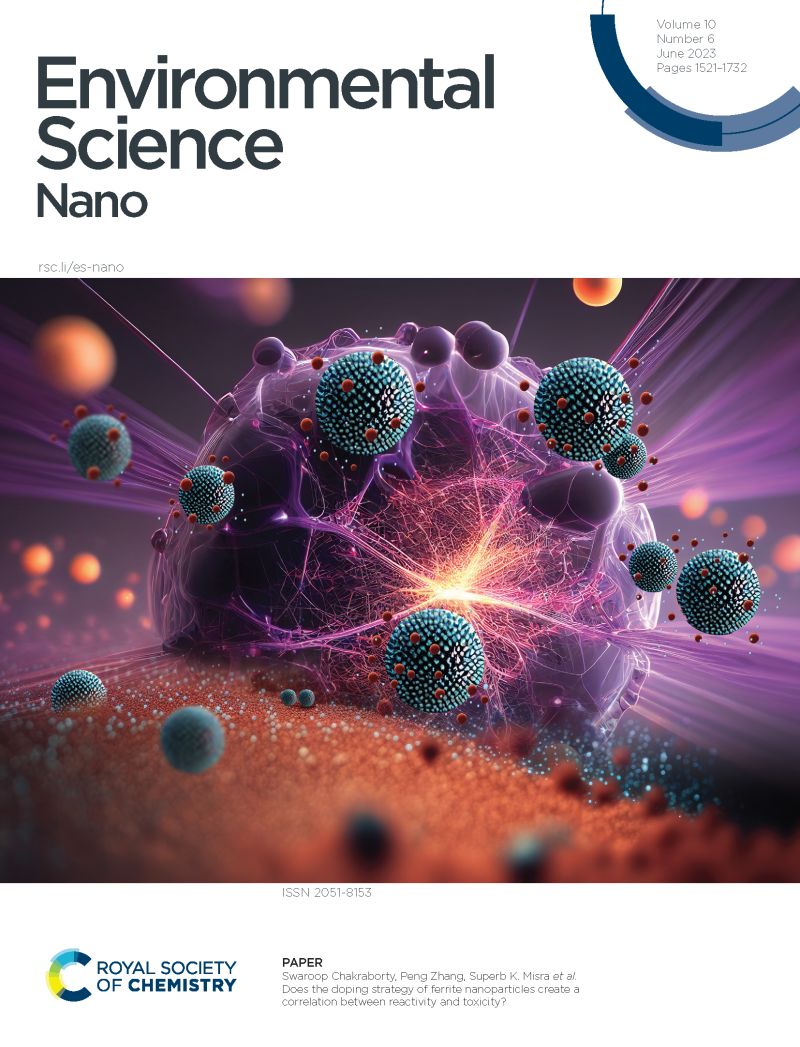聚苯乙烯和聚己内酯纳米塑料对巨噬细胞影响的比较。
IF 5.8
2区 环境科学与生态学
Q1 CHEMISTRY, MULTIDISCIPLINARY
引用次数: 0
摘要
塑料在环境中是持久性的,这表明它们可能会随着时间的推移逐渐积累而产生不利影响。释放到环境中的宏观塑料逐渐分解成微塑料和纳米塑料,这些微塑料和纳米塑料很容易被广泛的生物吸收,从而促进了这种渐进式积累。由于这些微塑料和纳米塑料是颗粒材料,它们在这些生物体中由专门的吞噬细胞(即脊椎动物的巨噬细胞)处理,这开启了塑料在巨噬细胞中积累可能引发各种反应的可能性。因此,减轻巨噬细胞和其他细胞类型中这种积累的一种方法是使用可生物降解塑料。聚己内酯是一种可生物降解塑料,在多种环境下都具有良好的降解特性。因此,我们利用蛋白质组学和验证实验相结合的方法研究了巨噬细胞对聚己内酯纳米球的反应,并将这些结果与聚苯乙烯纳米球诱导的结果进行了比较。蛋白质组学检测到的许多变化,例如线粒体、溶酶体或网状蛋白,并没有引起可检测的生理后果。聚己内酯处理的细胞的吞噬能力略有下降,而聚苯乙烯处理的细胞则没有。我们还发现,聚己内酯纳米粒在巨噬细胞中几天内降解,调节巨噬细胞的反应。吞噬功能减退消失,而聚苯乙烯引起的吞噬反应延迟激增。在聚己内酯处理的细胞中,也观察到促炎细胞因子分泌的延迟减少,这可能与羟基己酸的释放有关。本文章由计算机程序翻译,如有差异,请以英文原文为准。
A comparison of the effects of polystyrene and polycaprolactone nanoplastics on macrophages.
Plastics are persistent in the environment, which suggests that they may induce adverse effects due to their progressive accumulation over time. This progressive accumulation is facilitated by the fact that macroplastics released in the environment progressively fragment into micro and nanoplastics, which are easily taken up by a wide range of living organisms. As these micro and nanoplastics are particulate materials, they are handled in these living organisms by specialized phagocytic cells, namely macrophages in vertebrates, opening the possibility that plastics accumulating in macrophages may elicit a variety of responses. Thus, one way of alleviating such accumulation in macrophages and in other cell types would be to use biodegradable plastics. Polycaprolactone is a biodegradable plastic showing favorable degradation characteristics in several environments. We thus investigated the responses of macrophages upon treatment with polycaprolactone nanobeads, using a combination of proteomics and validation experiments, and compared these results to the ones induced by polystyrene nanobeads. Many changes detected by proteomics, for example in the mitochondrial, lysosomal or reticulum proteins did not induce detectable physiological consequences. A slight decrease in the phagocytic capacity of polycaprolactone-treated cells was detected, but not for polystyrene-treated cells. We also showed that polycaprolactone nanobeads degrade within a few days in macrophages, modulating the macrophage responses. The derease in phagocytosis disappeared, while polystyrene induced a delayed surge in the phagocytic response. A delayed decrease in the secretion of pro-inflammatory cytokines was also observed in of polycaprolactone-treated cells, which may be linked to the release of hydroxycaproic acid.
求助全文
通过发布文献求助,成功后即可免费获取论文全文。
去求助
来源期刊

Environmental Science: Nano
CHEMISTRY, MULTIDISCIPLINARY-ENVIRONMENTAL SCIENCES
CiteScore
12.20
自引率
5.50%
发文量
290
审稿时长
2.1 months
期刊介绍:
Environmental Science: Nano serves as a comprehensive and high-impact peer-reviewed source of information on the design and demonstration of engineered nanomaterials for environment-based applications. It also covers the interactions between engineered, natural, and incidental nanomaterials with biological and environmental systems. This scope includes, but is not limited to, the following topic areas:
Novel nanomaterial-based applications for water, air, soil, food, and energy sustainability
Nanomaterial interactions with biological systems and nanotoxicology
Environmental fate, reactivity, and transformations of nanoscale materials
Nanoscale processes in the environment
Sustainable nanotechnology including rational nanomaterial design, life cycle assessment, risk/benefit analysis
 求助内容:
求助内容: 应助结果提醒方式:
应助结果提醒方式:


